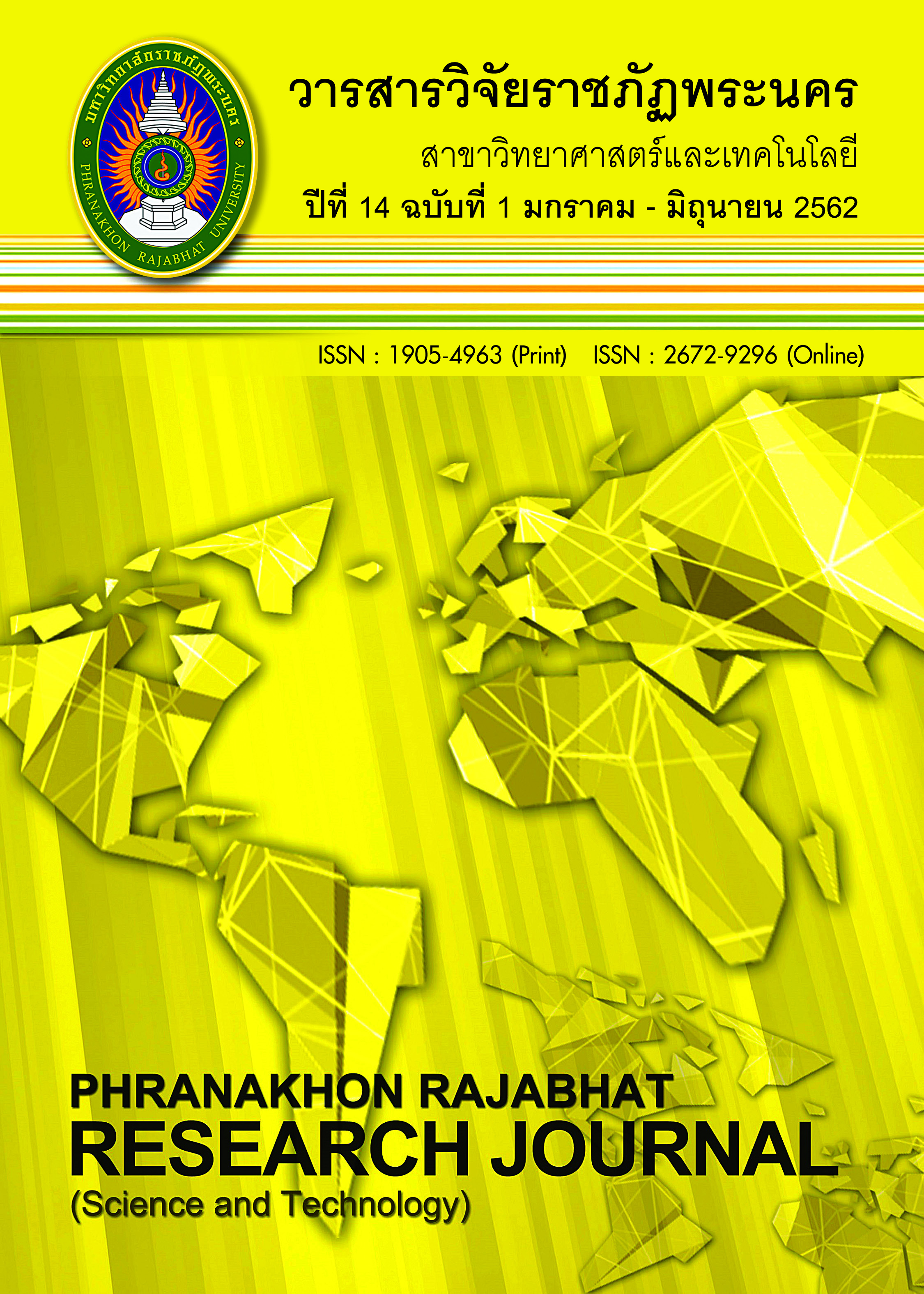DEVELOPMENT OF MIXED BODIES FROM WATER TREATMENT SLUDGE FOR POTTERY
Keywords:
Water Treatment Sludge, Mixed Bodies, Pottery.Abstract
This research aims to 1) analyze characteristics of water treatment’s sludge from Bangkhen Water Treatment Plant 2) to develop readymade clay from water treatment’s sludge and verify its efficiency and 3) to study impacts of mixed bodies from water treatment’s sludge by analyzing its chemical properties with XRD and XRF techniques. The mixed bodies from water treatment’s sludge were developed by purposive sampling method with ninety-point triaxial blend. The selected samples were testified toughness and physical properties before and after firing at 1200 - 1230 °C. After that, a survey of mixed body clay usage and budget was carried out in five educational institutions to evaluate the replacement of original materials and compare the amount of water treatment’s sludge used in the production as well as estimating cost reduction from the removal of water treatment’s sludge in Bangkhen Water Treatment Plant.
From the result of analyzing properties of the water treatment’s sludge with XRD and XRF techniques, it was found that main components of the sludge are quartz, kaolinite and biotite. Its major oxide percentage are SiO2 (57%) AI2O3 (27.40%) and Fe2O3 (7.92%). The sludge has low plasticity and the shrinkage percentage after drying was 7.00 with the strength before firing at 0.27 MPa. From the study of physical properties after firing at 950 - 1200 °C, it was found that the shrinkage percentage of water treatment’s sludge was 10 – 24 whereas its strength was between 0.09 – 6.04 MPa and the percentage of water absorption was between 7.53 – 28.70 respectively. For the development of mixed bodies, it was found that the most suitable constituents contain 40% of water treatment’s sludge, 20% of ball clays and 20% of calcite with the size of 20 and 200 mesh. From the survey of mixed body clay usage and budget in five educational institutions related to pottery, it was shown that three types of clay have been used, which are compound, red and own mixed clays. When calculating the cost of making mixed bodies from the research, it was found that the production cost was approximately 4000 baht/ton. The comparison of cost reduction from the usage of water treatment’s sludge was also investigated, it was shown that every institution could save the cost of buying clay for making pottery at 46.94 %. The amount of water sludge was also reduced by 0.6 ton per ton of readymade clay. Therefore, there is a production of mixed bodies from water treatment’s sludge, the Metropolitan Water Authority will save more budget on the sludge removal and disposal and gain some revenue from the sale of mixed bodies from water treatment’s sludge.
References
Chonchartpinyoh, S., Jantrasa, R. & Patanapanitipong, P. (2010). Processing of Sludge from Water Treatment for Application in Pottery Industry. Brick and Tile Product. Valaya Alongkorn Rajabhat University under the Royal Patronage. (in Thai)
Ganokganya, A., A. & Suwanittaya, P. (2015). The Use of Water Treatment Sludge in Ceramic Glaze. National Conference on Civil Engineering, 20th July 8-10, Chonburi. (in Thai)
Hamer, F. & J. (2004). The Pottery’s Dictionary of Materials and techniques. 5th Edn. English: A&C Black Publishers Ltd. (in Thai)
Ingsiriwat, P. (1998). Ceramic Bodies. Bangkok. O.S printing House. (in Thai)
Metropolitan Waterworks Authority. (2018). Water Supply and Distribution System, Provincial Waterworks Authority. (Online). Retrieved May 9, 2018 from https://www.mwa.co.th/ewt_news.php?nid=712. (in Thai)
Numnuan, K. (1997). The Use Sludge from Water system replace Plastic clay for produce bricks. Bachelor of Engineering. Civil Engineering. Mahanakorn University of Technology. (in Thai)
Pattanakudee, S. (2017). Academic and Information Division. Bangkhen Water Treatment Plant. (Interview). (in Thai)
Preuksawan, K. (2003). The Use of Water treatment Sludge. (Online). Retrieved April
2 from https://www.mwa.co.th/art_takom.html. (in Thai)
Sangsuk, S. (2010). Nano Clay. Metal and Materials Research Institute Chulalongkorn University. Bangkok. (in Thai)
Sarasit, P. (2000). Teaching “Testing of physical properties in ceramics”. Faculty of Industrial Technology Nakhon Si Thammarat Rajabhat Institute. (in Thai)
Sawangpon, A. (2000). Raw materials used in ceramics. Bangkok. Odein Store. (in Thai)
Sommana, R. & G. (2014). Binder from Calcium carbide and Sludge. Conference The 10th annual Concrete (Oct 20-22, 2014). (in Thai)
Tiamsam, S. (2012). Strength Development of Ceramic Meat with Ceramic Fiber. Journal of Naresuan University. Science and Technology, Vol. 5 No. 1. (in Thai)
Vichitamorphan, D., S., P. & Reuangsemret, W. (2004). Application of sludge from tap water. Bangkok. Metallurgical Technology Group. Department of Primary Industries and Mines. (in Thai)
Waitayaongsagol, S. (2014). Reduction of particle size of ceramic raw materials. (Online). Retrieved August 27, 2014 from https://www.material.chula.ac.th/RADIO47/June/radio6-2.htm (in Thai)
Downloads
Published
Issue
Section
License
โปรดกรอกเอกสารและลงนาม "หนังสือรับรองให้ตีพิมพ์บทความในวารสารวิจัยมหาวิทยาลัยราชภัฏพระนคร สาขาวิทยาศาสตร์และเทคโนโลยี" ก่อนการตีพิมพ์




